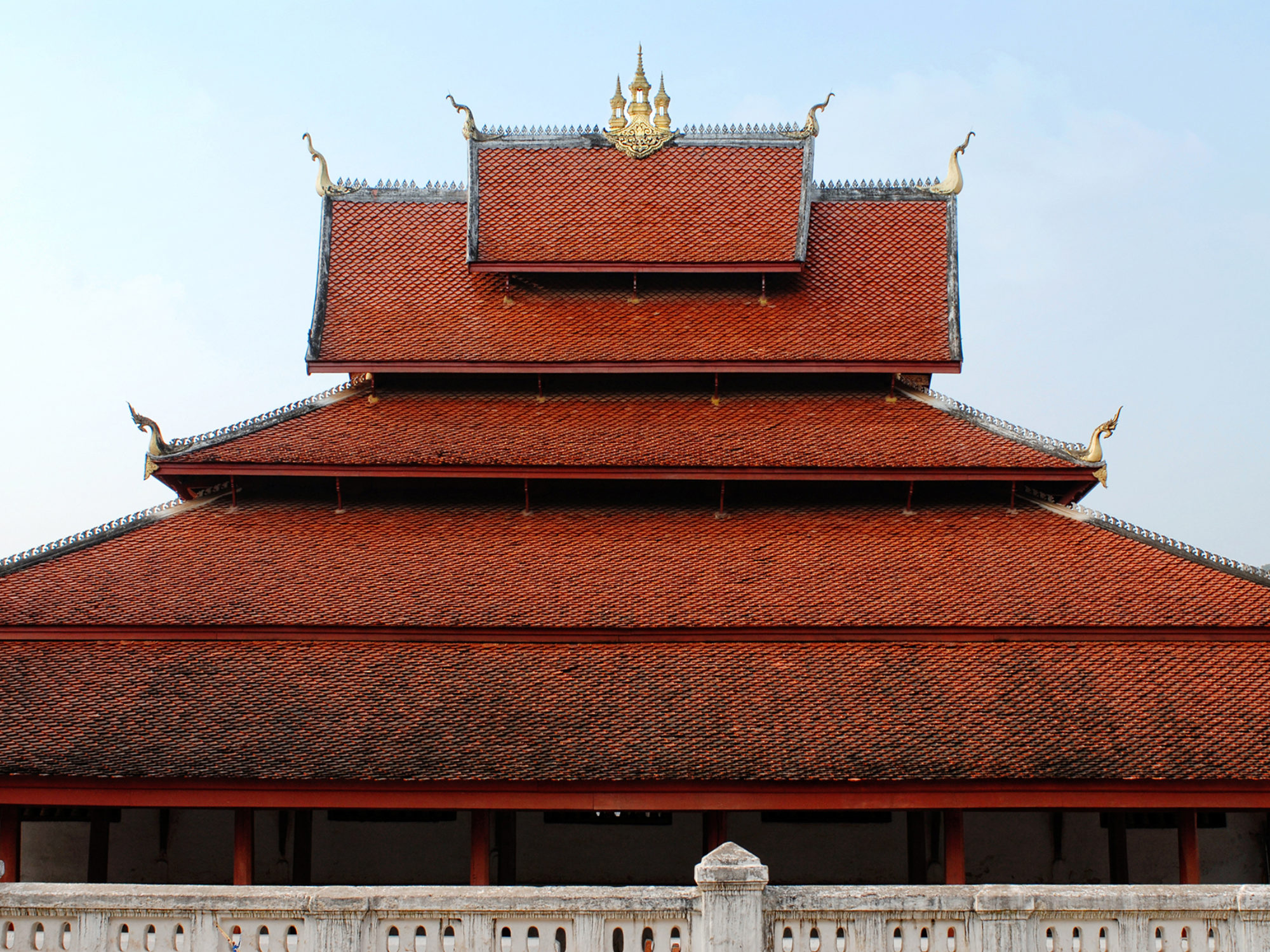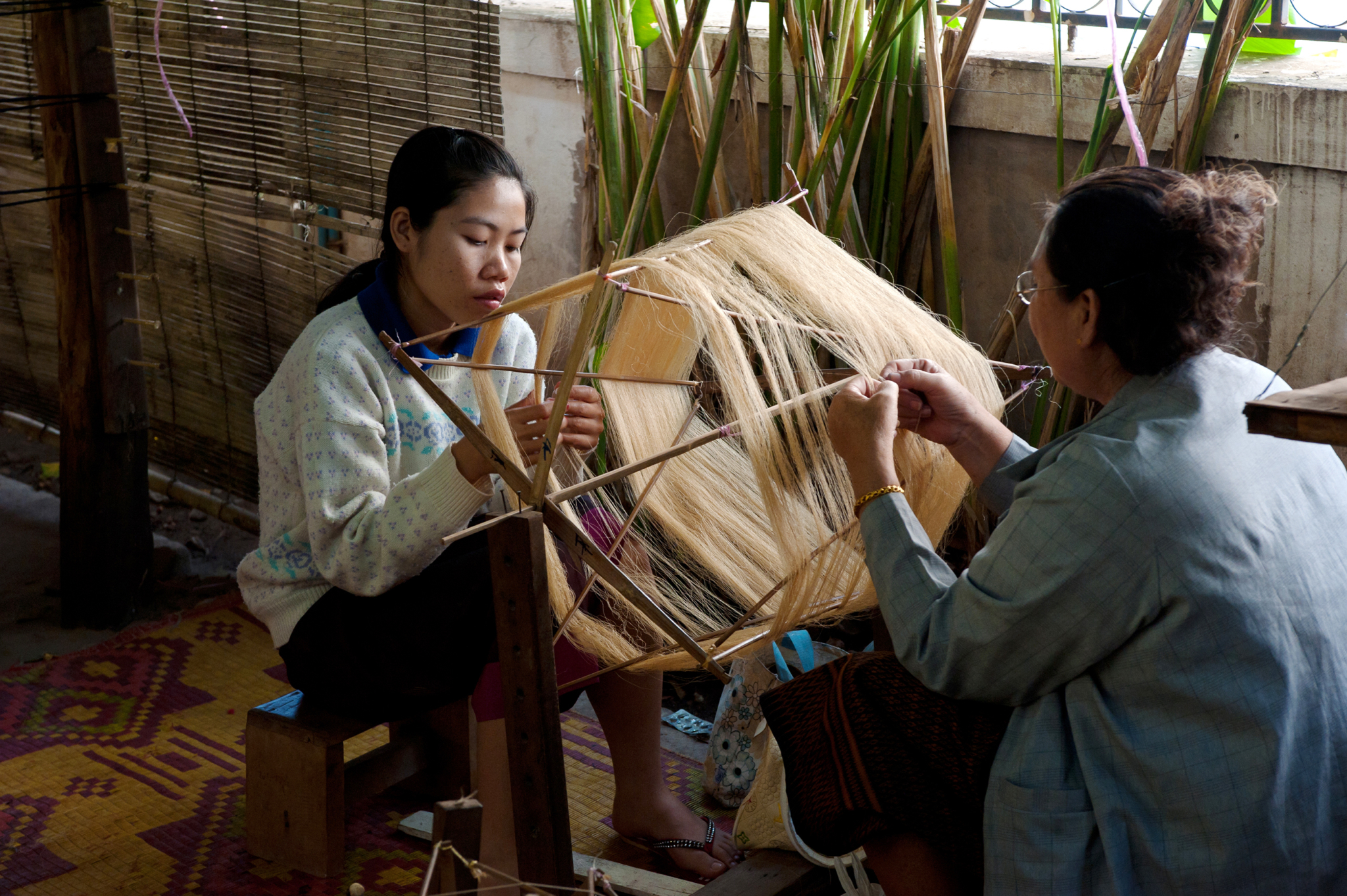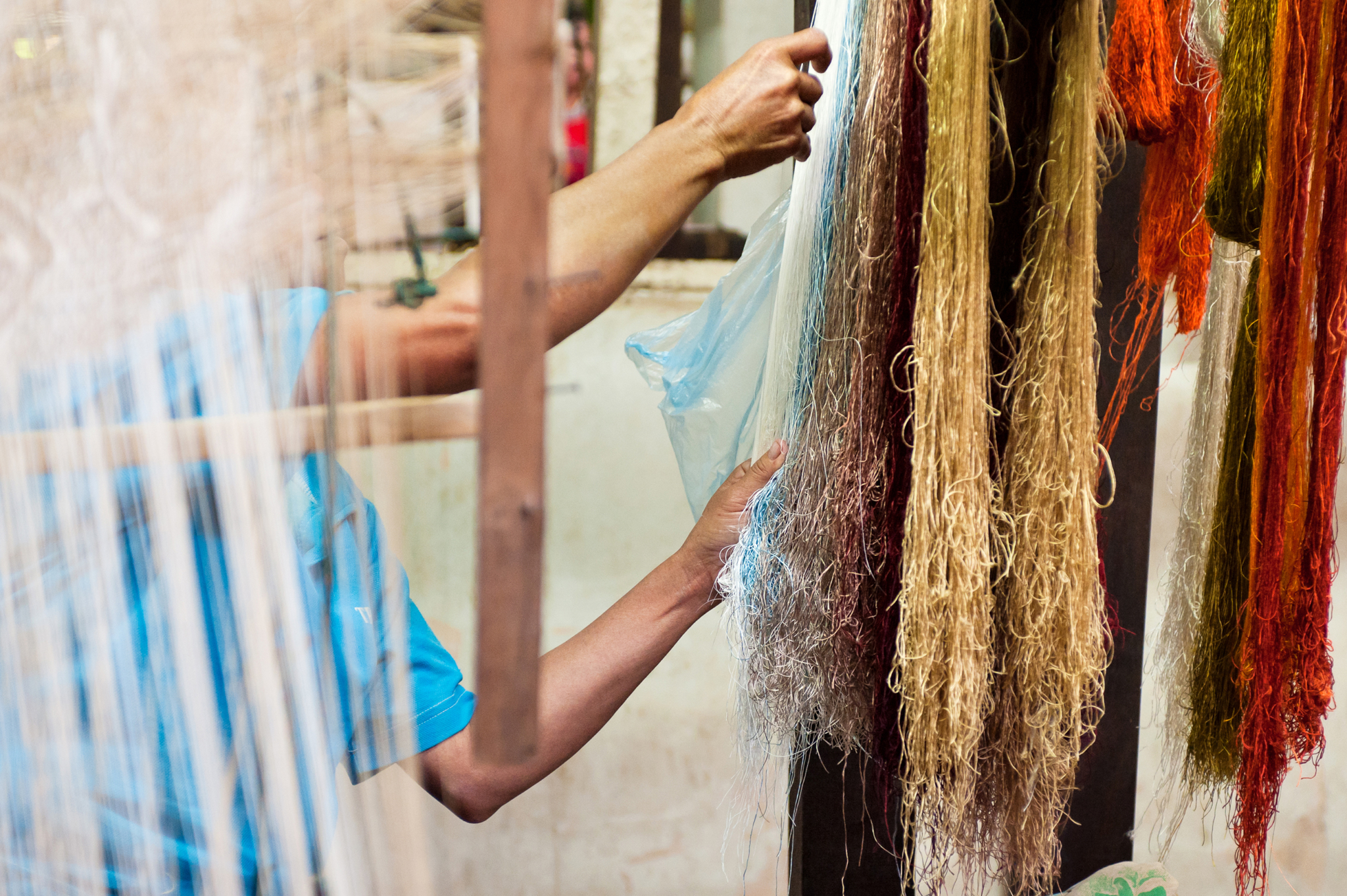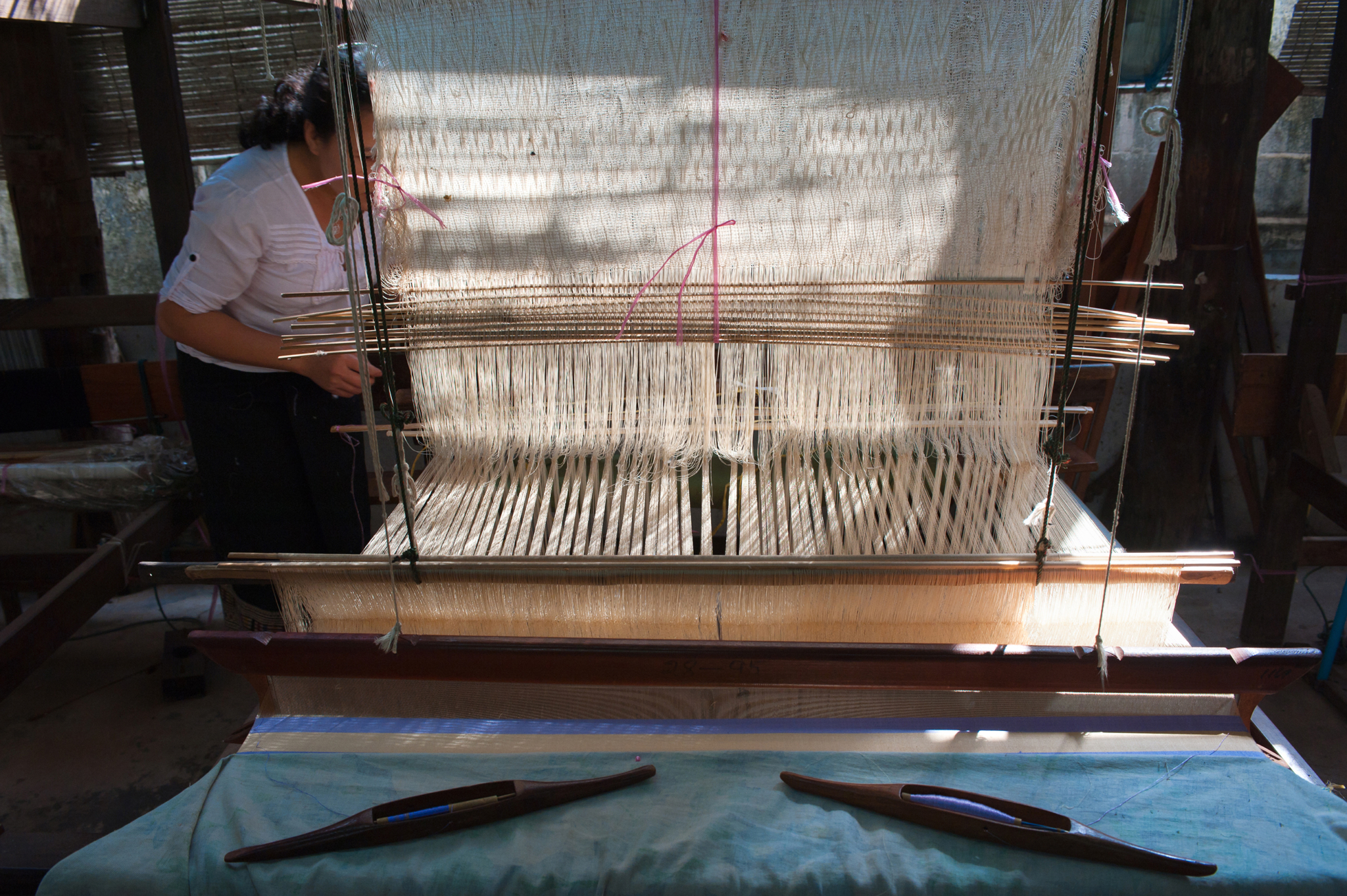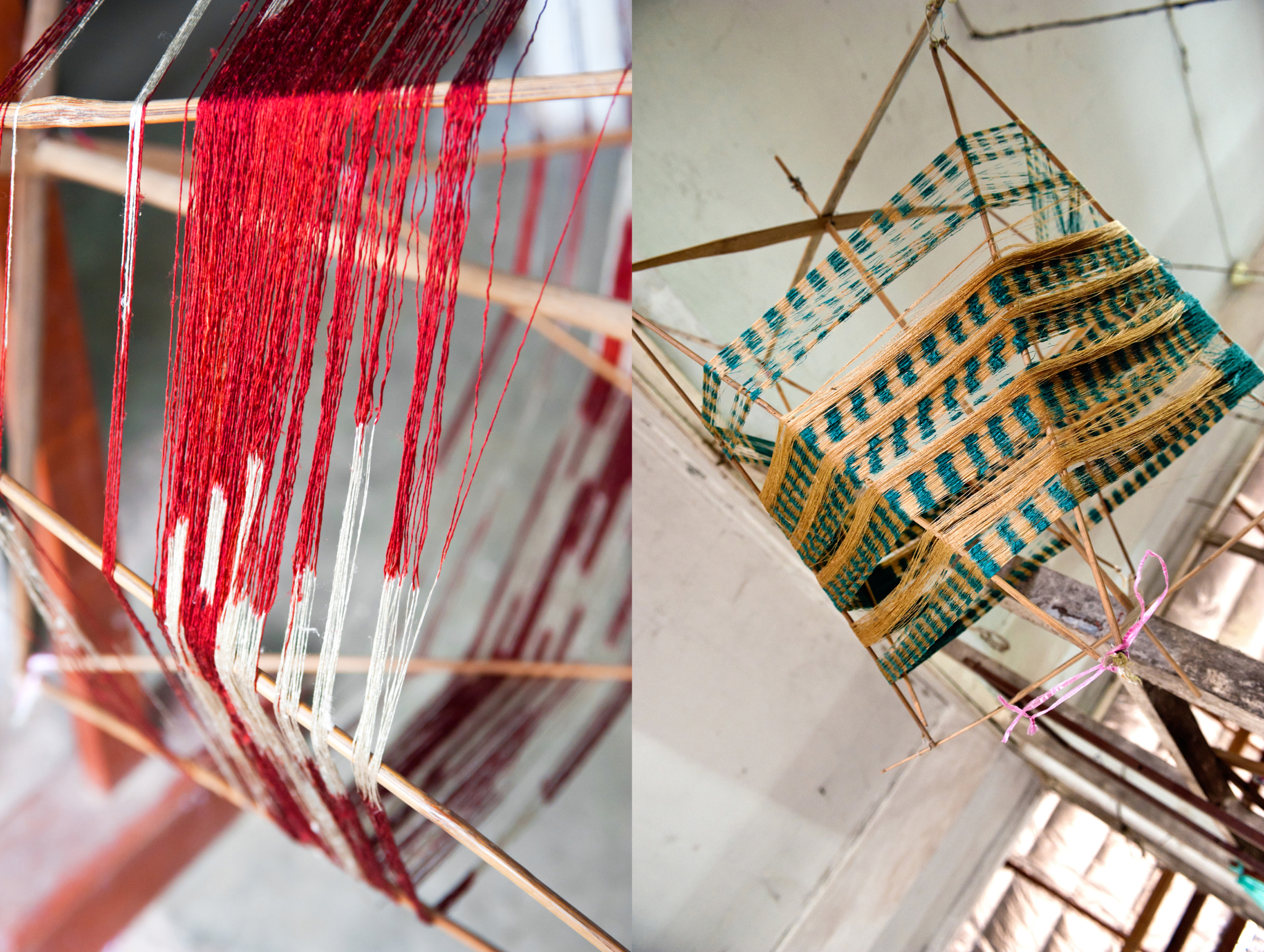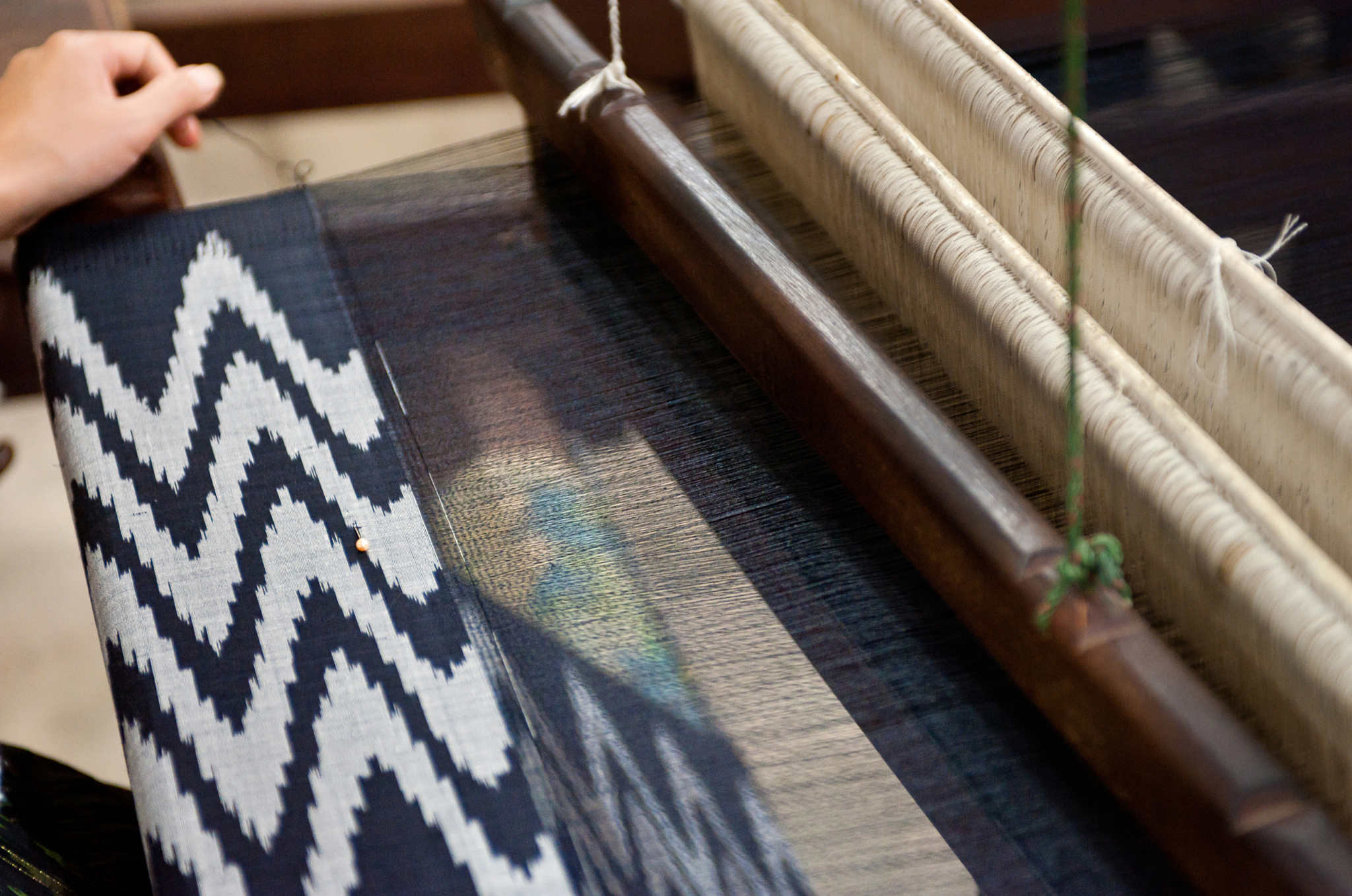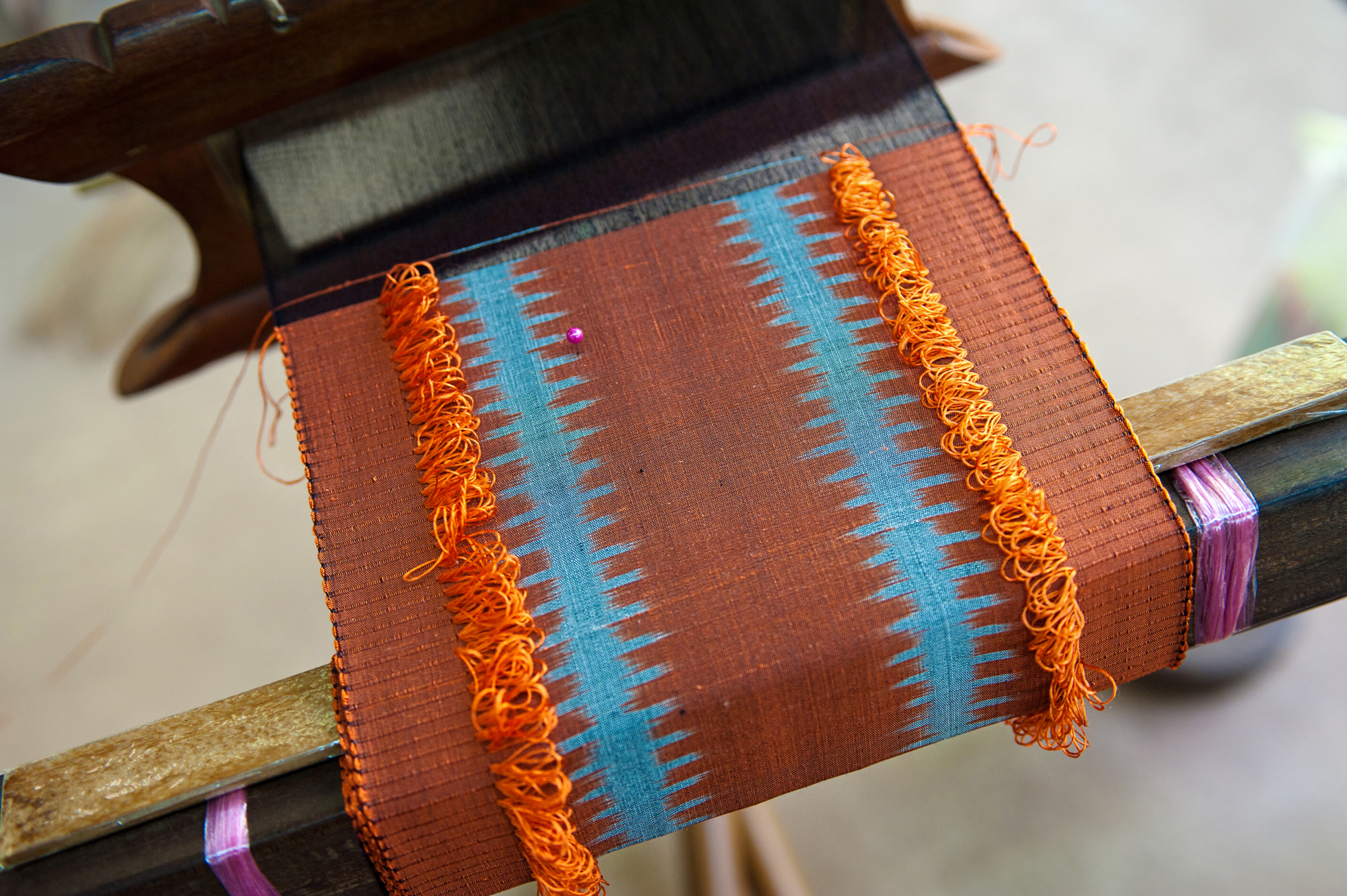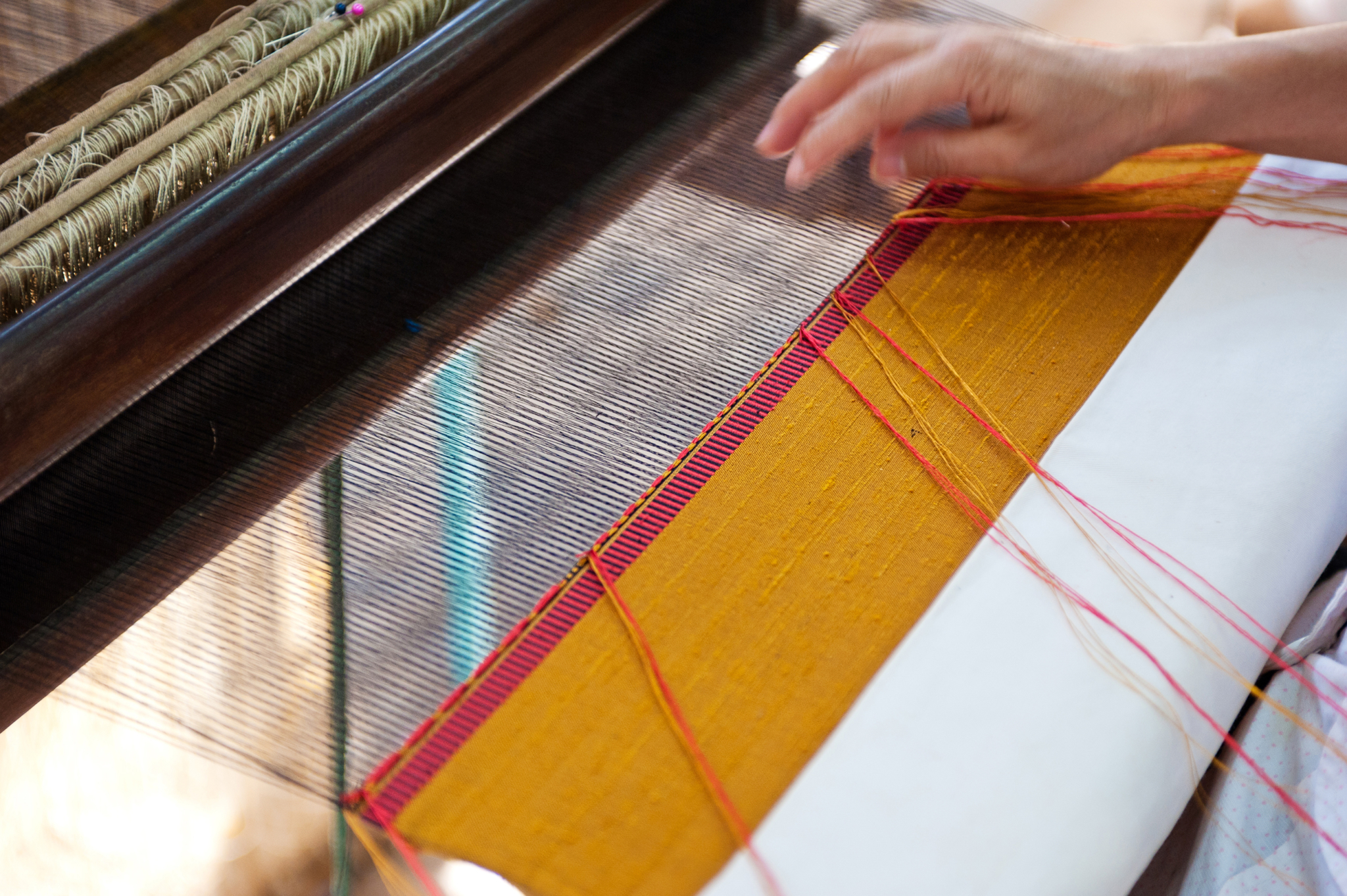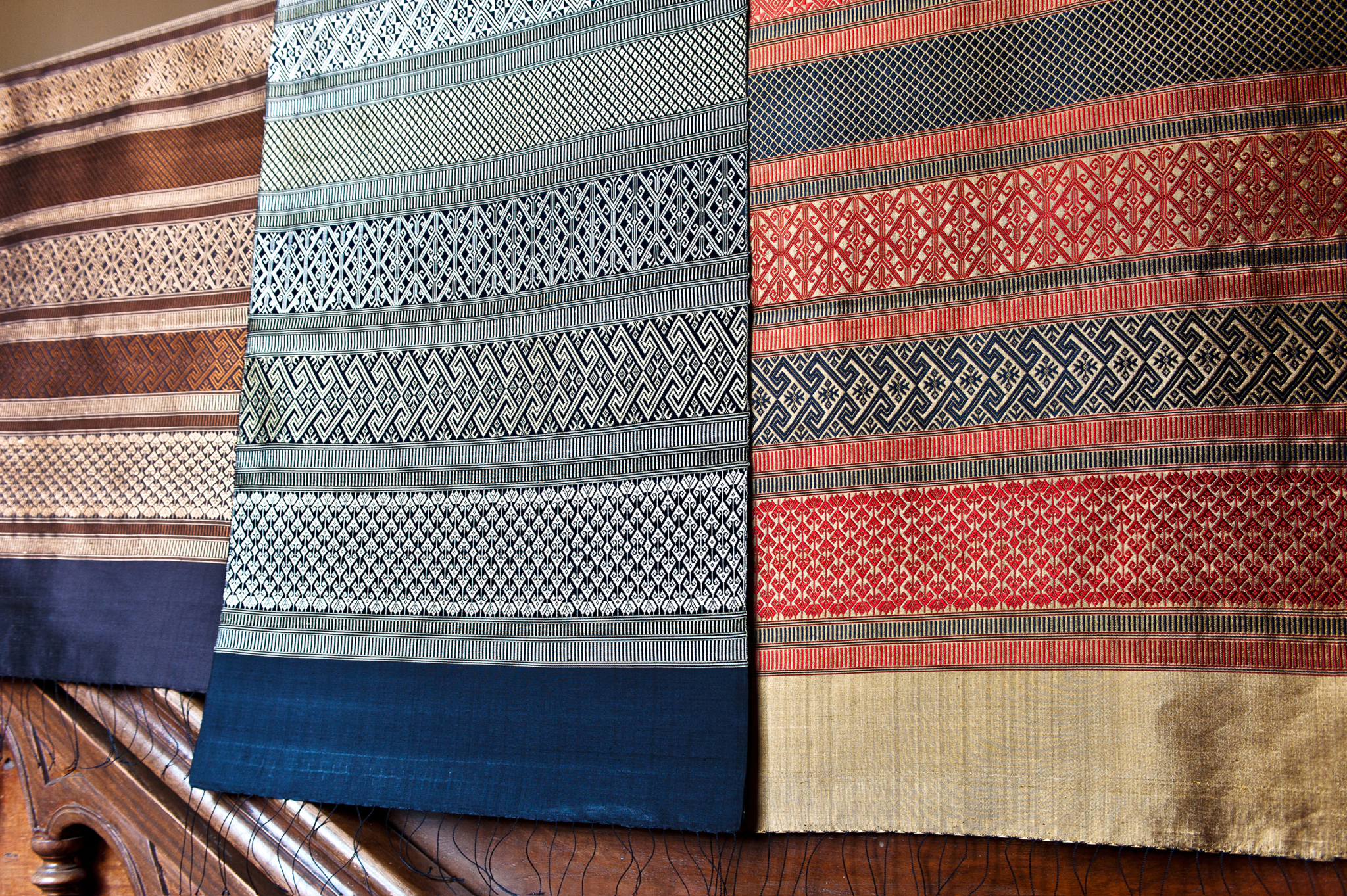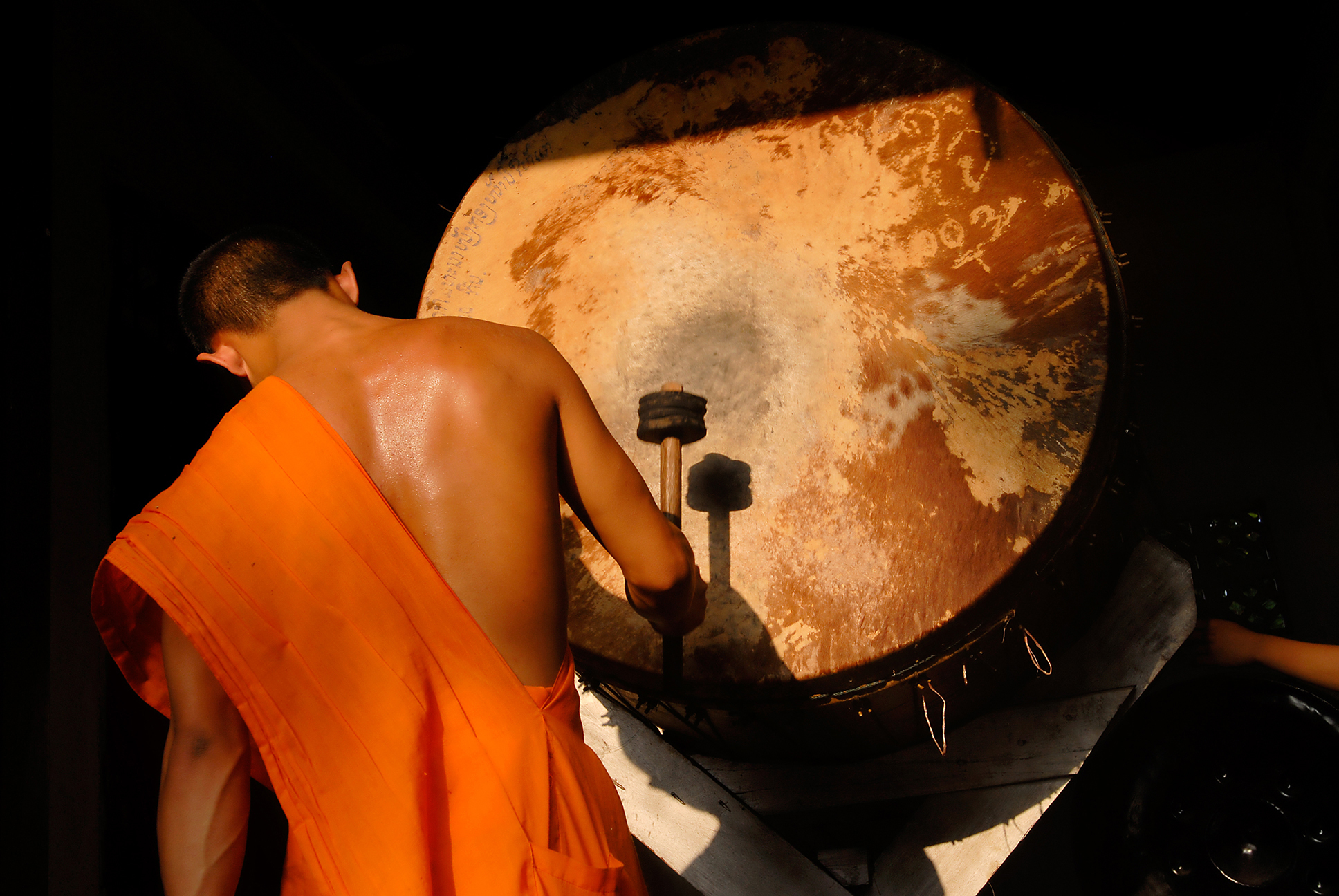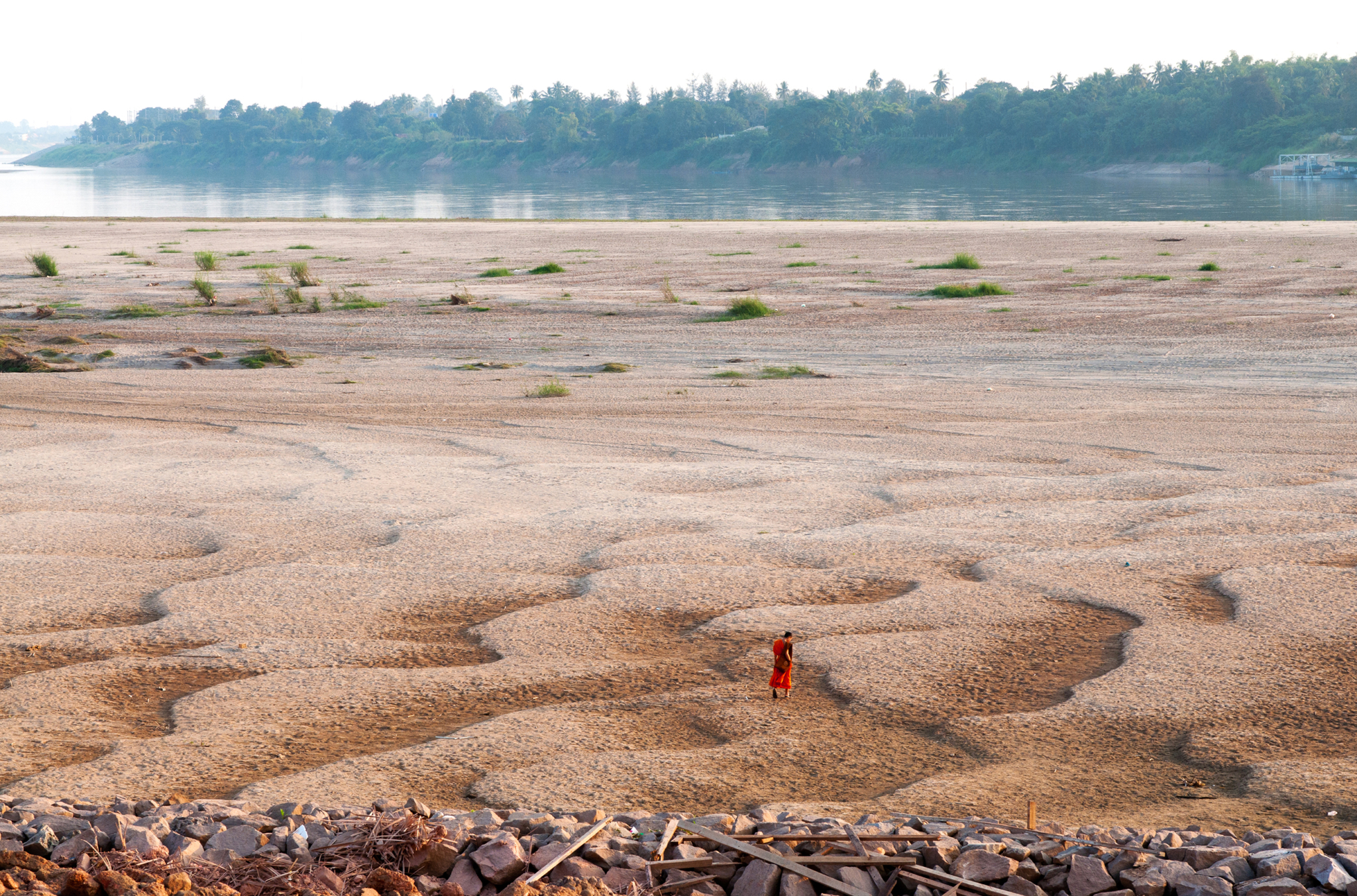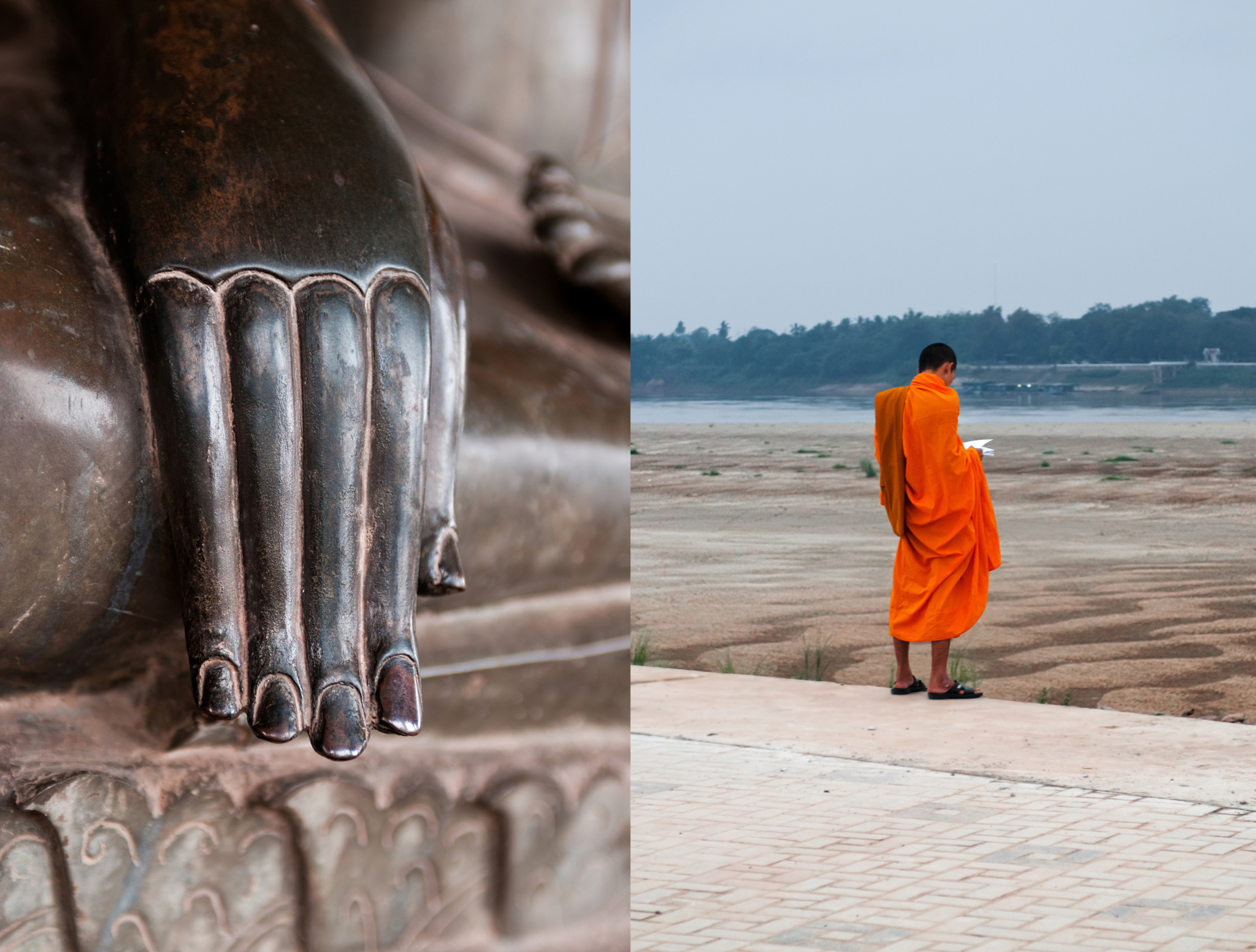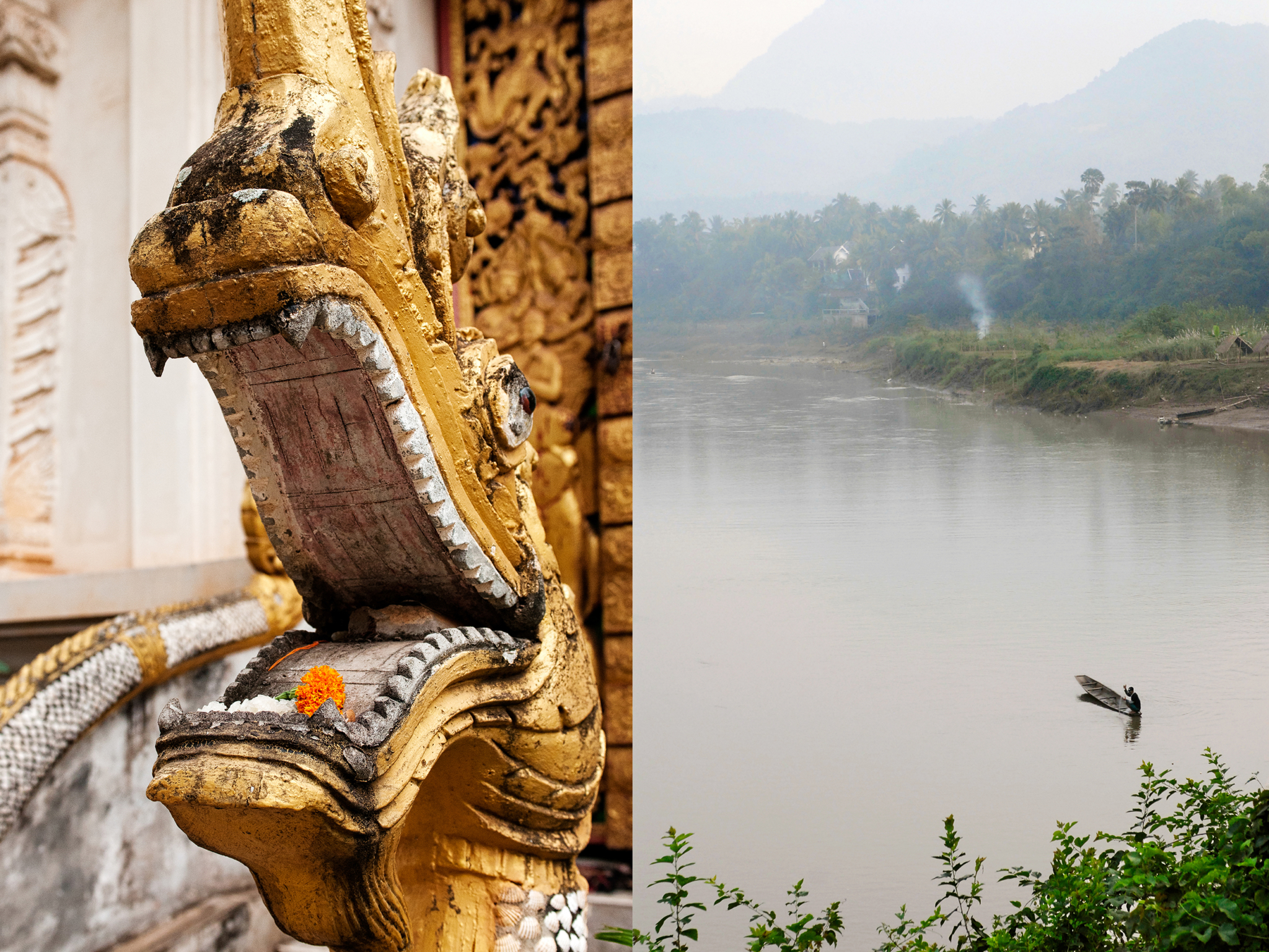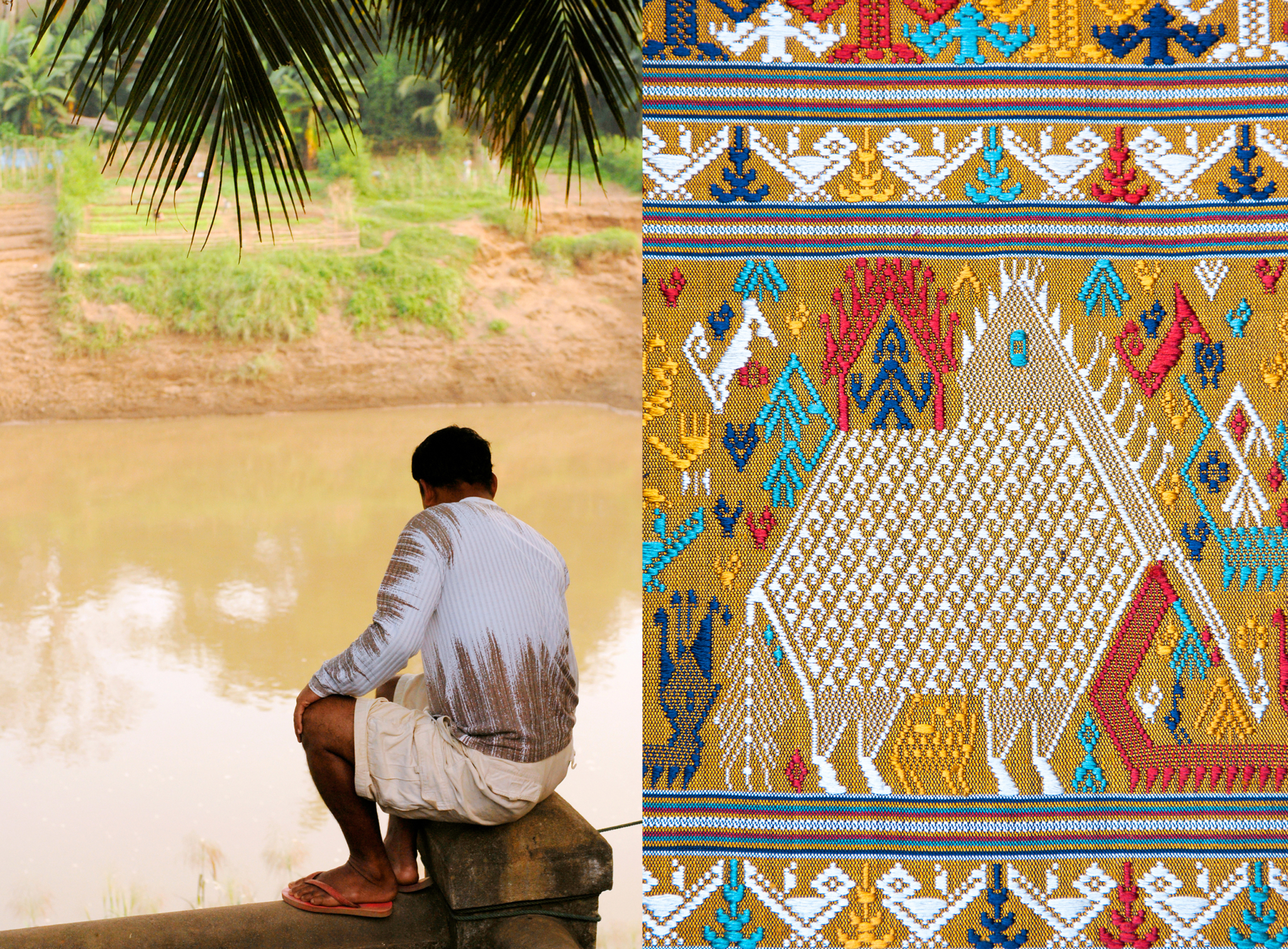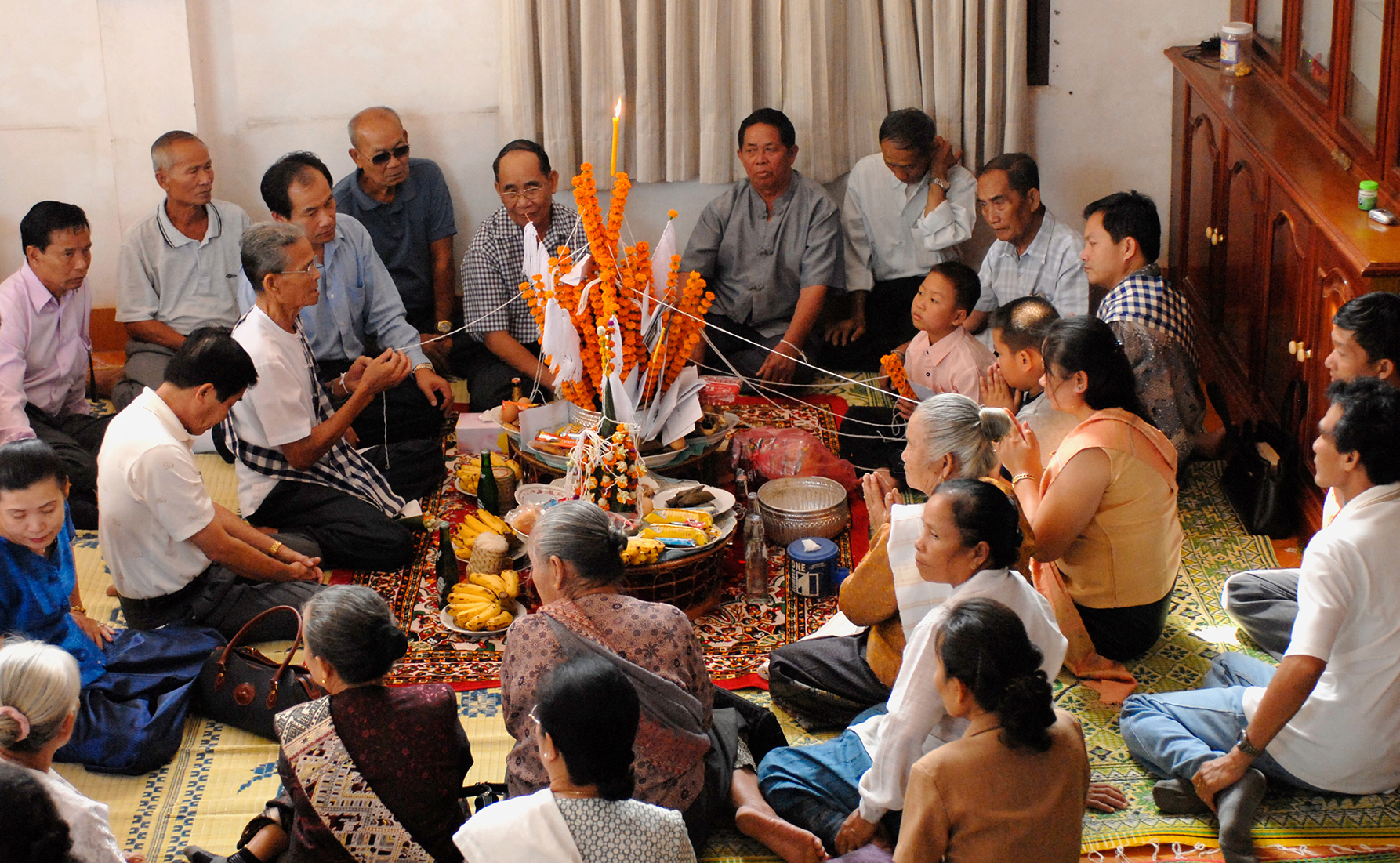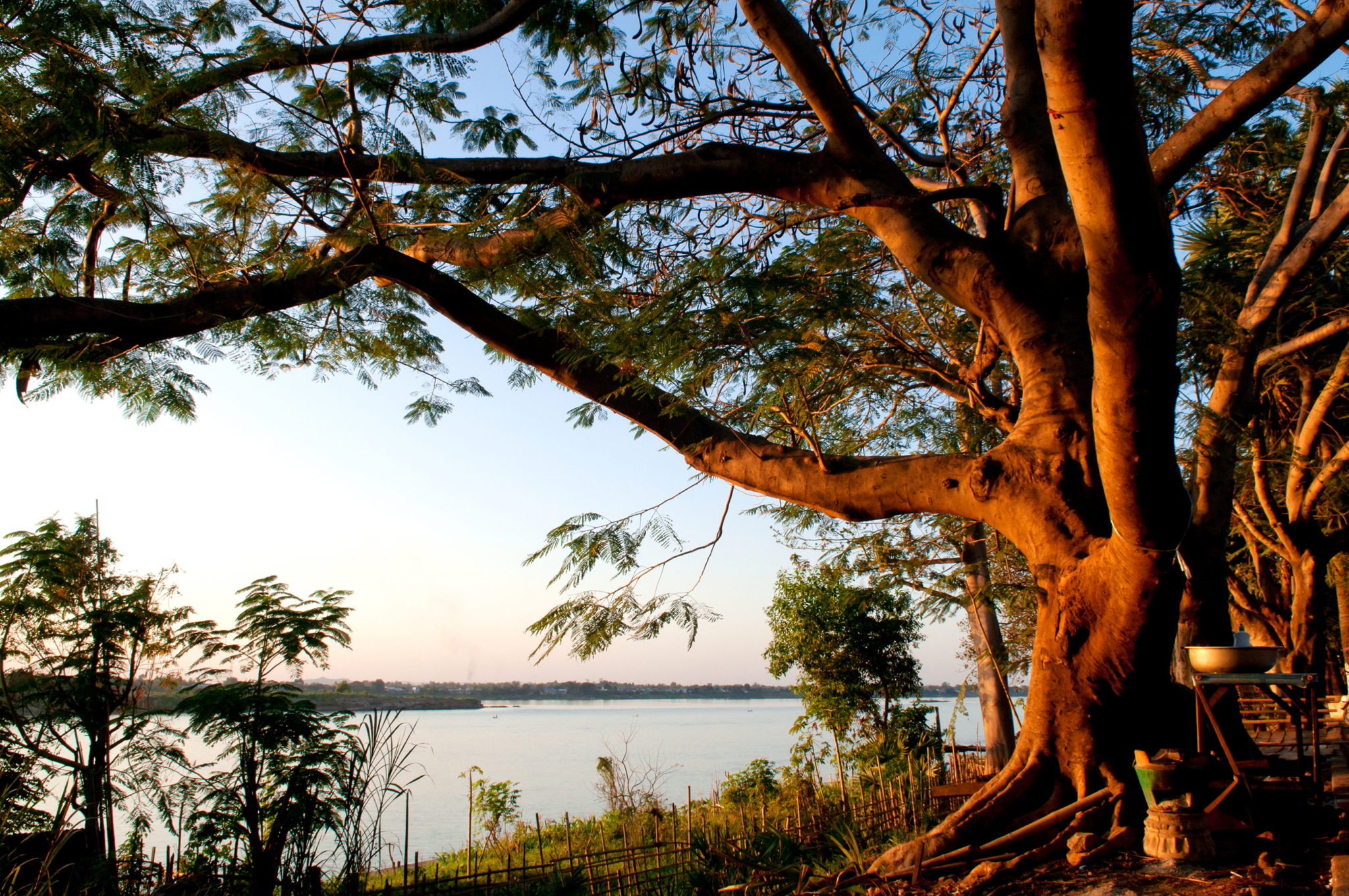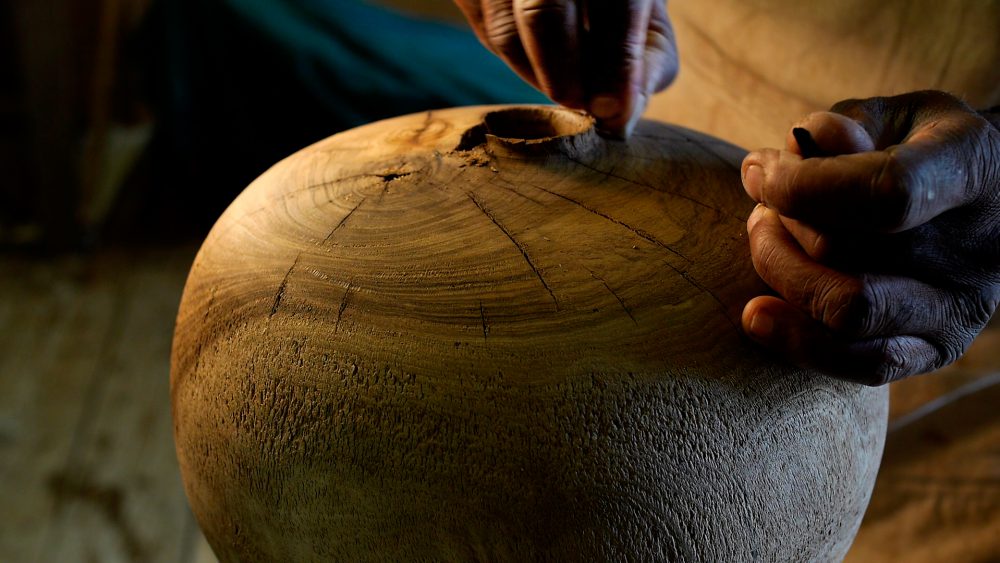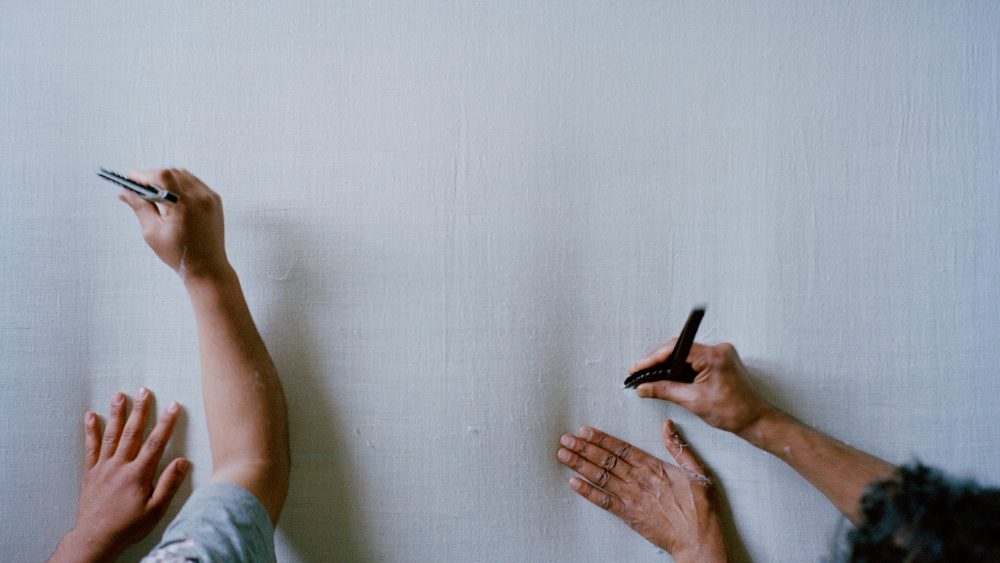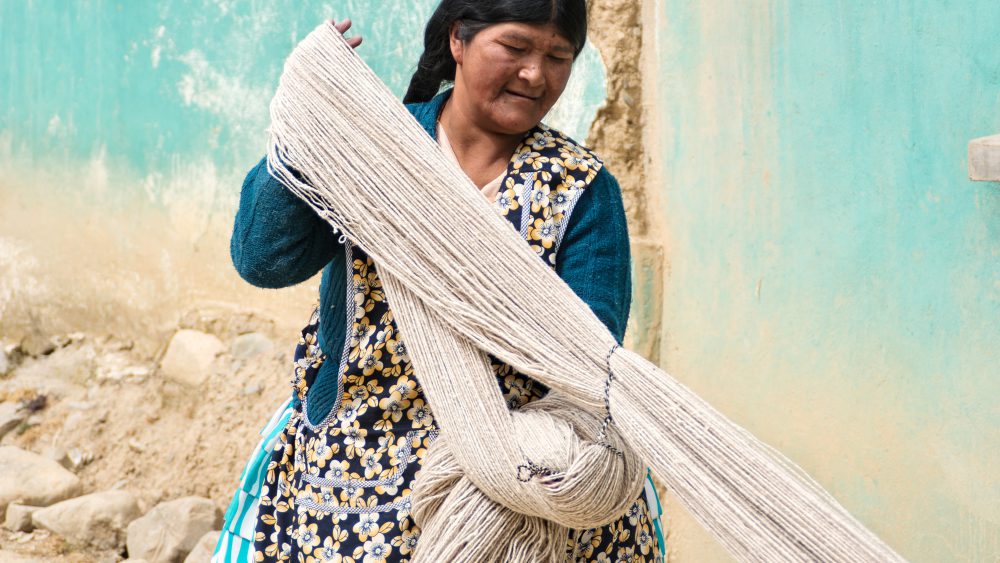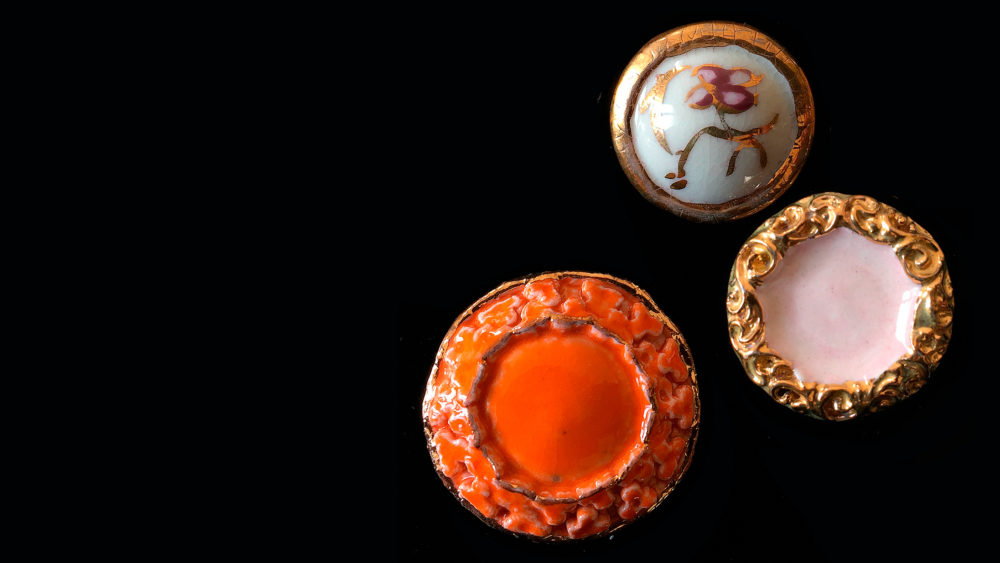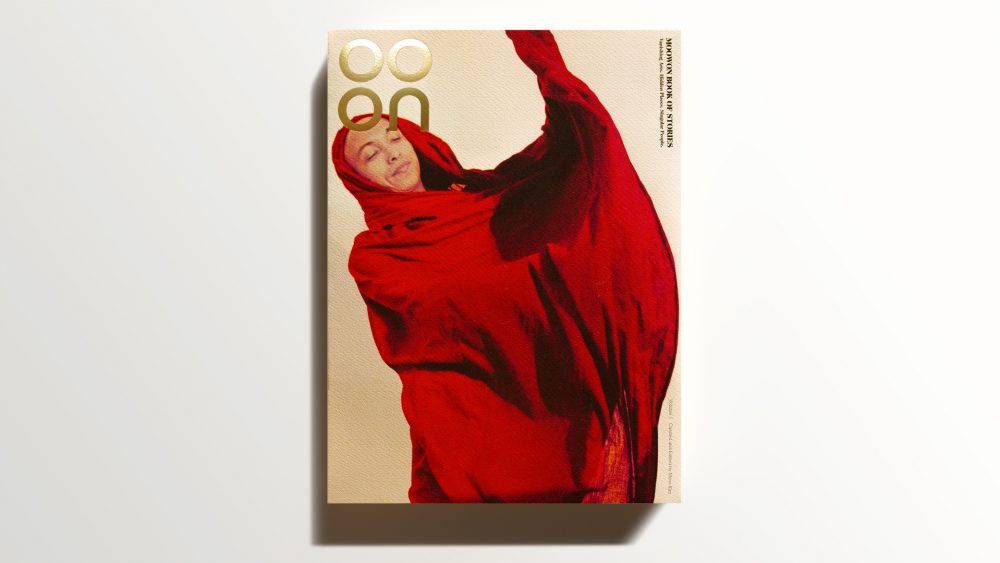________________________________
Photographs of the textiles and the weaving studio
in the following two sections were taken at Lao Textiles in Vientiane.
Its founder, Carol Cassidy, is a designer and an accomplished weaver
who creates contemporary woven art based on traditional Lao patterns.
________________________________
and Popular
Designs
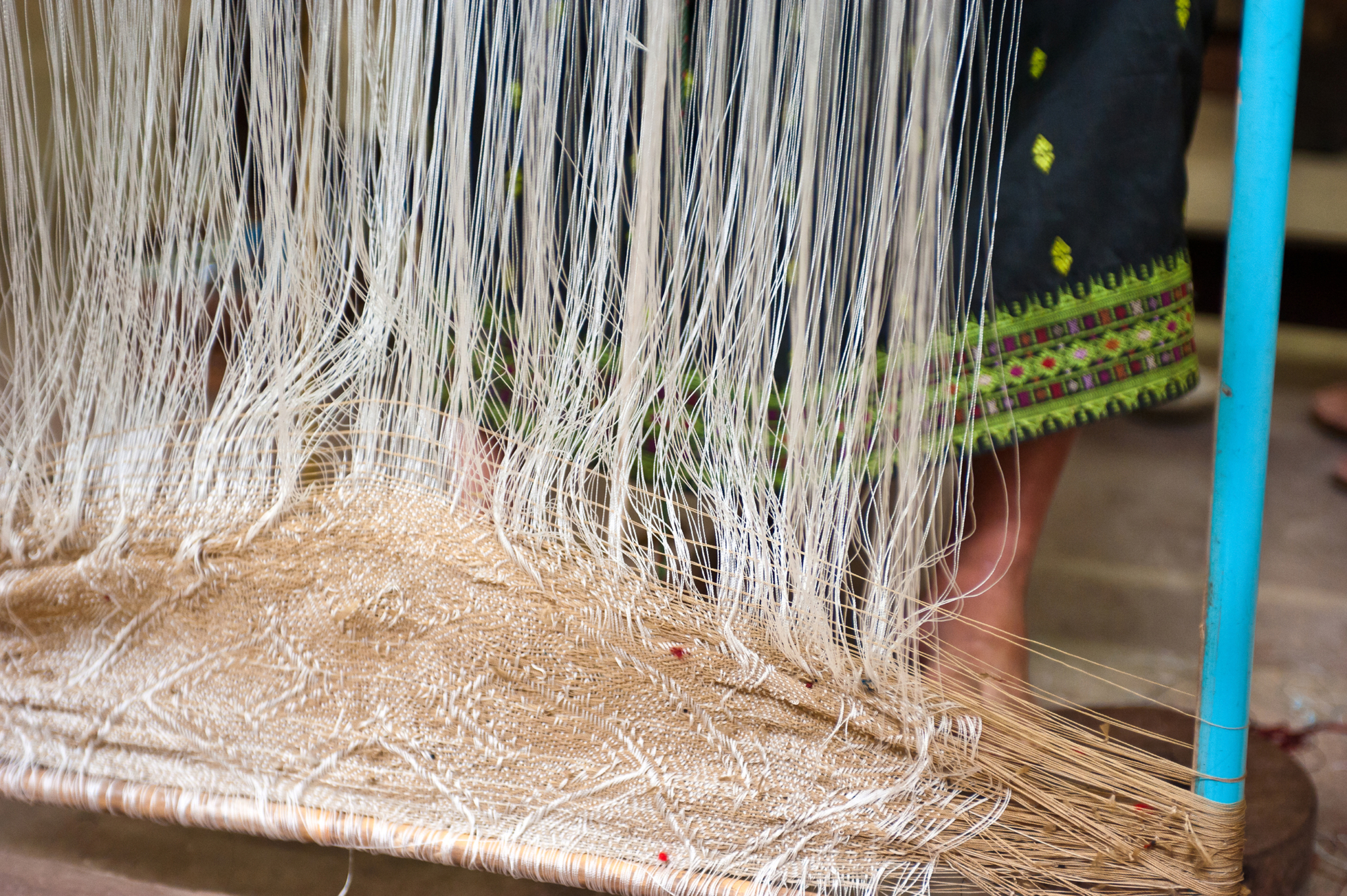
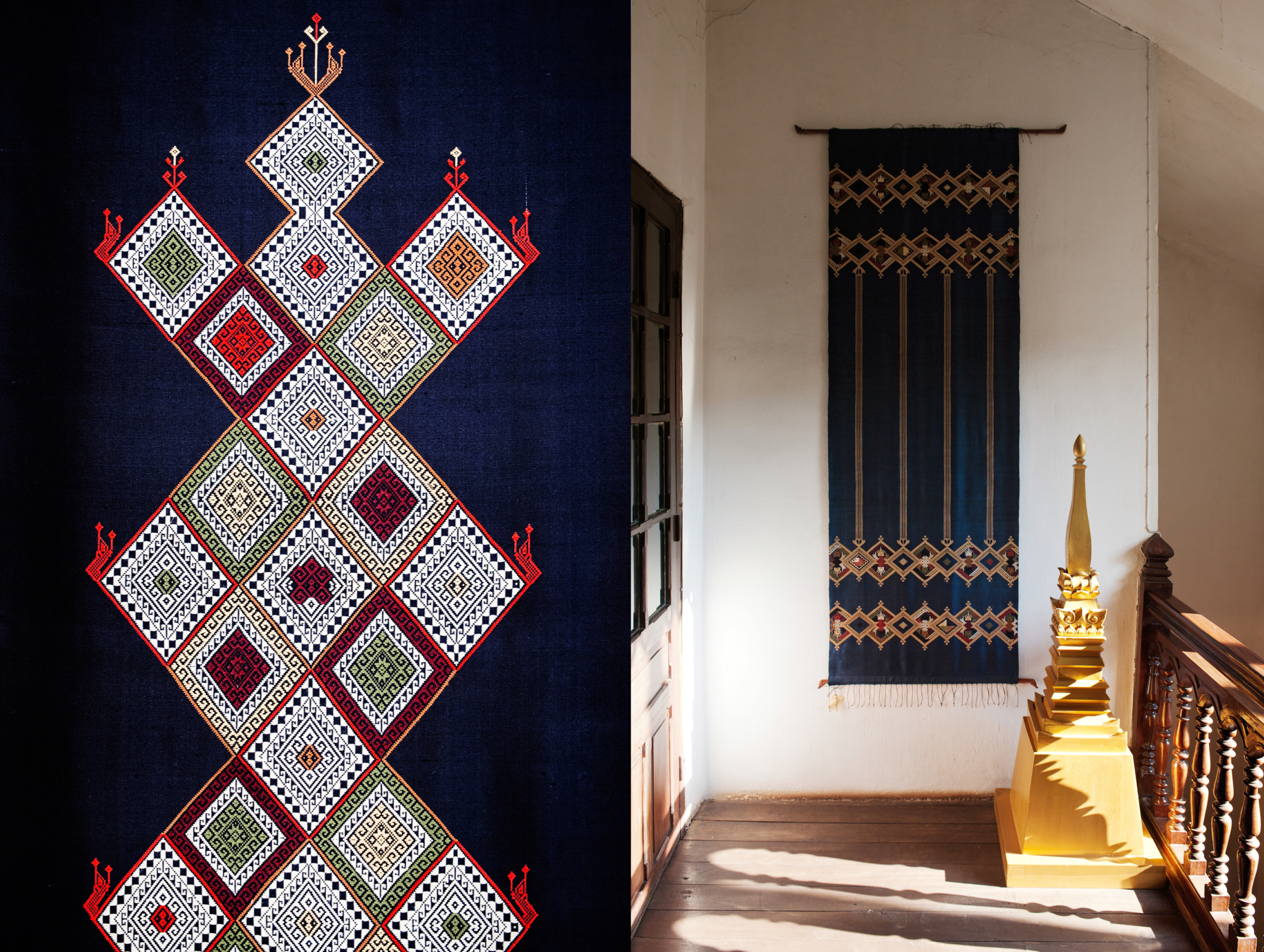
A wall hanging with diamond and Naga motifs.
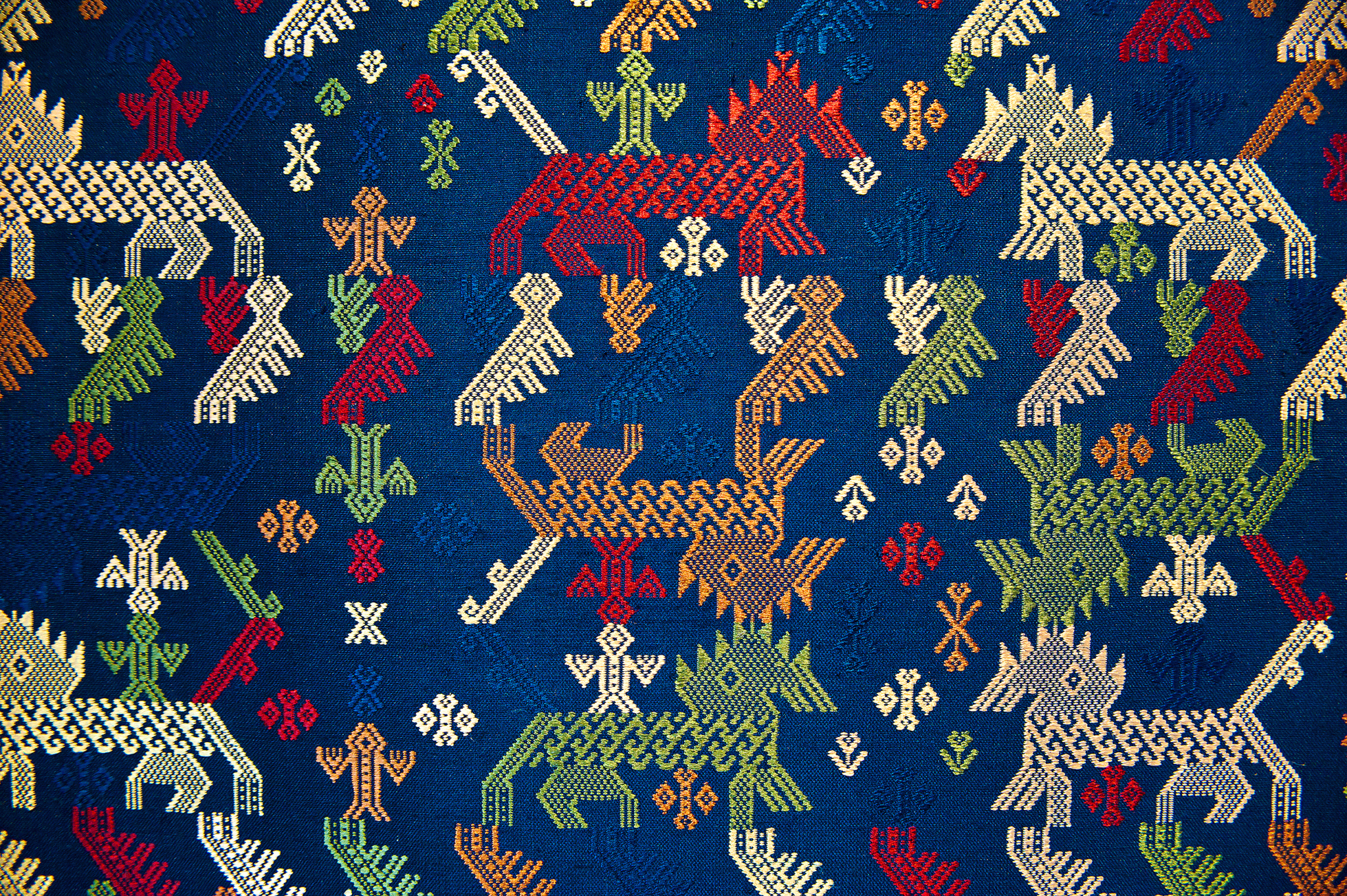
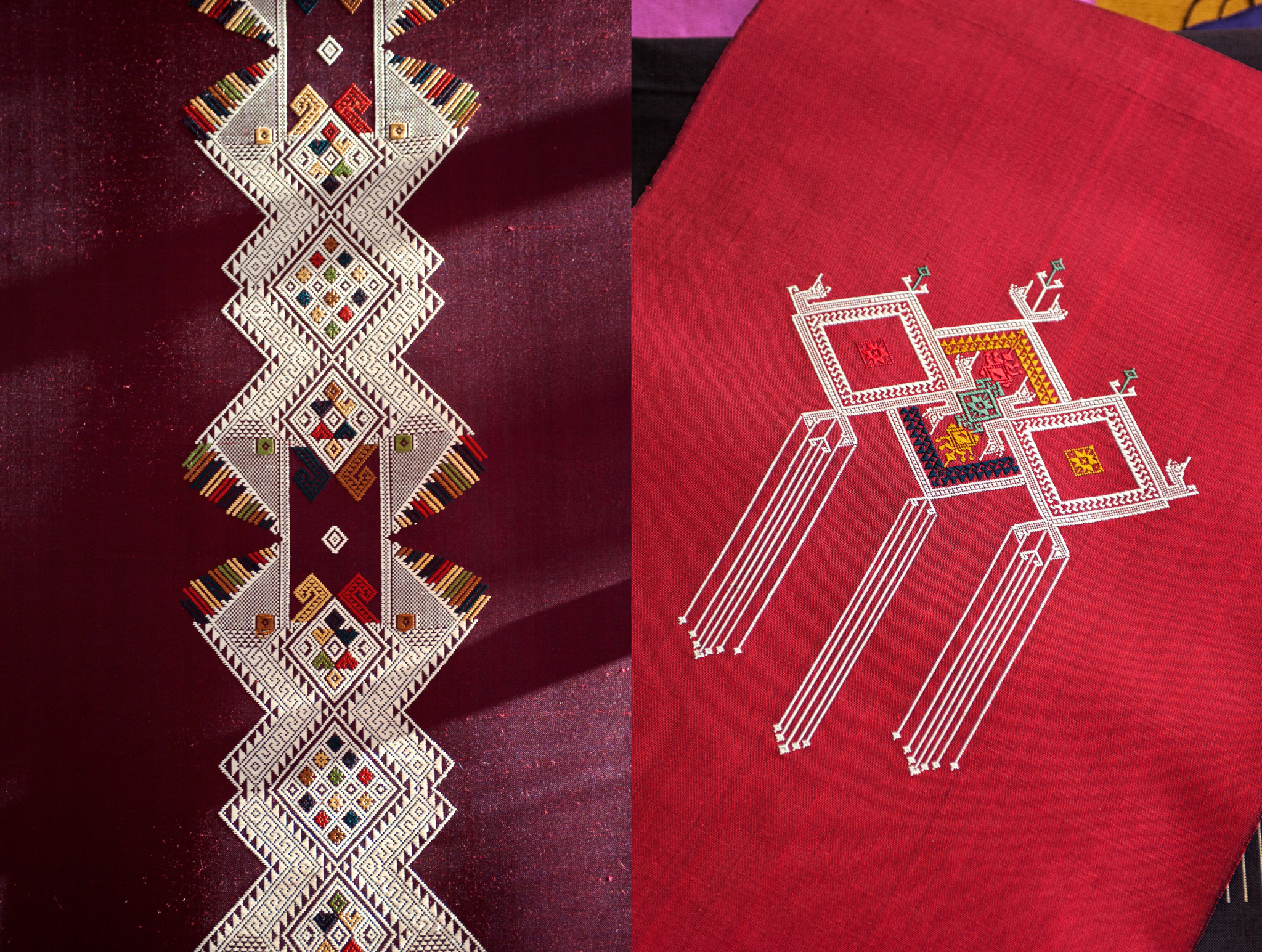
(LEFT) Detail from a wall hanging with complex motifs. (RIGHT) A wall panel with diamond and Naga motifs.
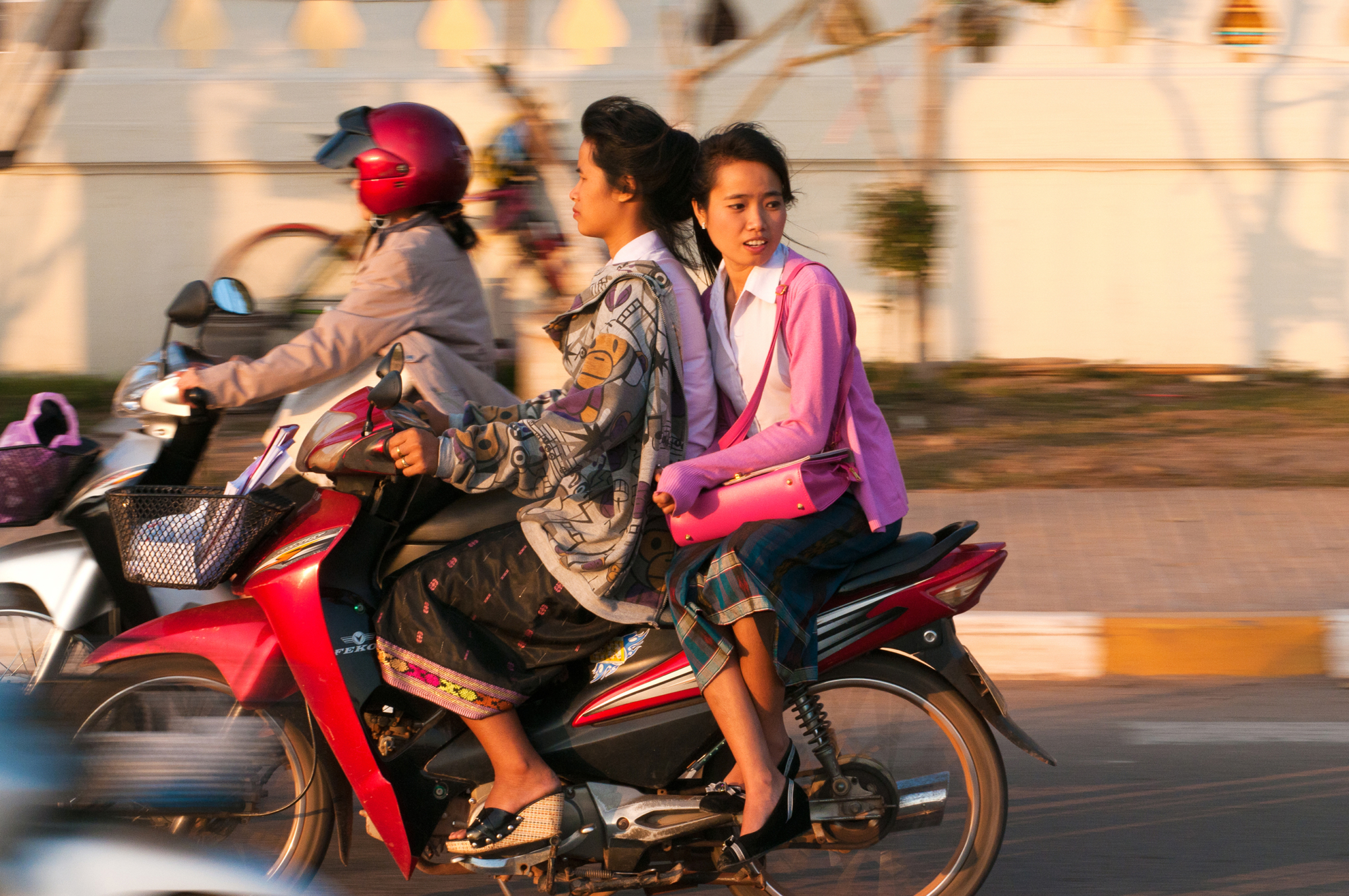
Historically, textiles are very important to the Laotian people. These cloths were designed to convey cultural identities, weaving techniques and spiritual beliefs.
Intricate designs depict way of life, ethnic affiliation and religious beliefs. The Lao women’s ankle-long tubular skirt (sinh) is the most vivid example. This popular women’s custom conveys their marital status and age, and the weaving styles, colors and patterns vary according to ethnic group. The sinh is made of three parts, the waist is called the head (Houa Sinh), the main part is called the body (Phune Sinh) and hem is referred to as the feet (Tin Sinh).
Young girls first learn weaving by making the waist of a sinh. Traditionally, Lao women wove for their personal use, not for a commercial market, and it was an honor to be a skilled weaver. Other textiles used for daily life or rituals -- such as wall hangings, pillows, bed covers, headcloths, funeral cloths-- convey stories of myths and religions. When young women weave their dowry, they make many different and intricate patterns to show their weaving skills. When these women get married, they take their handwoven cloths to their new home. The dowry usually includes woven blankets, pillows, mattresses, door curtains and mosquito net bands.
Techniques
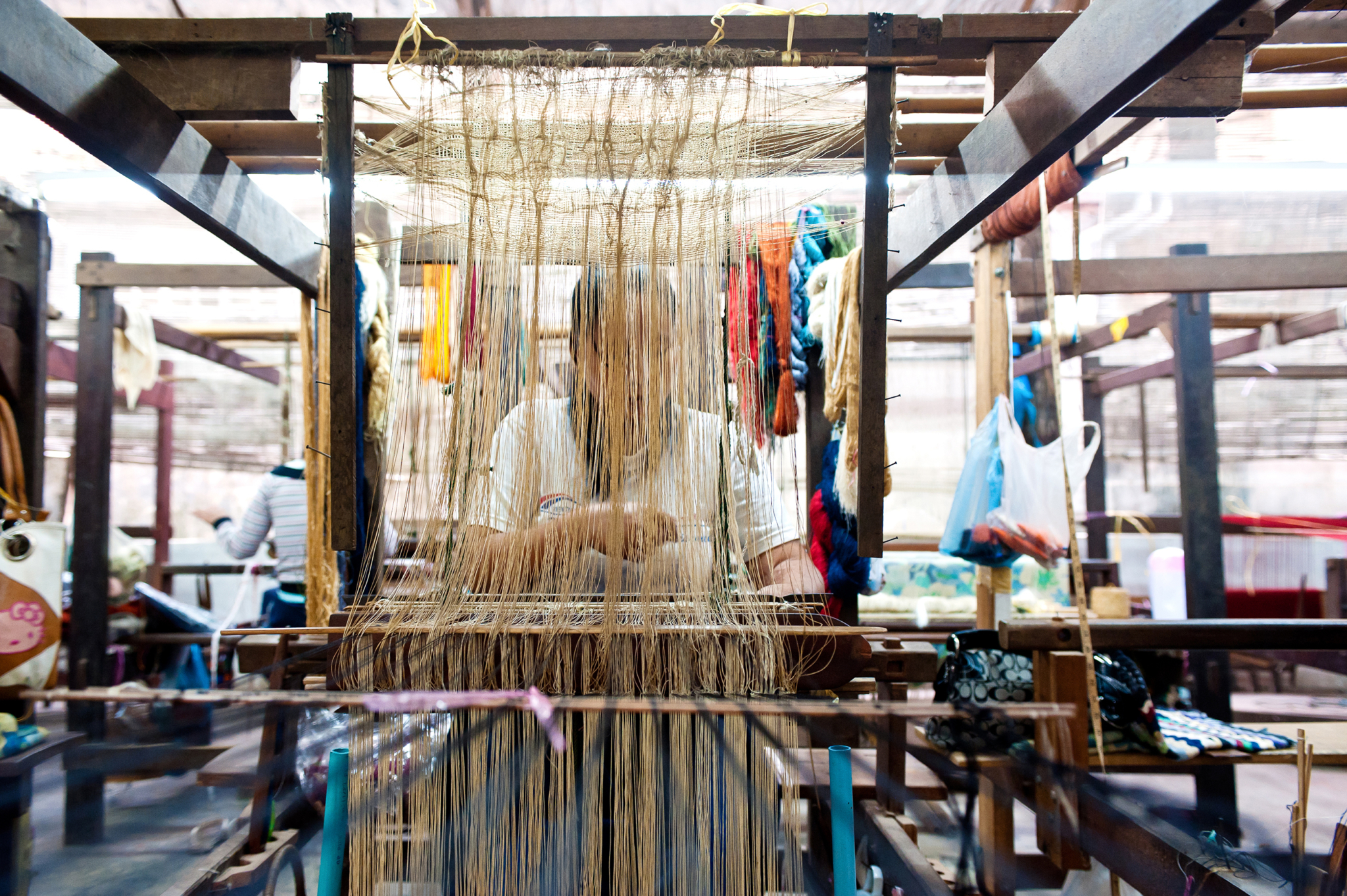
To enjoy the full story, become a Member.
Already a Member? Log in.
For $50/year,
+ Enjoy full-length members-only stories
+ Unlock all rare stories from the “Moowon Collection”
+ Support our cause in bringing meaningful purpose-driven stories
+ Contribute to those in need (part of your membership fee goes to charities)

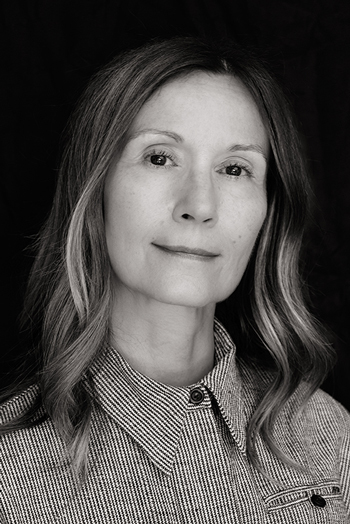
Anne Laure Camilleri is a freelance photographer based in Paris. She studied Film Making at the Conservatoire Libre du Cinéma Français and worked as a post-production supervisor before shifting to photography. Combining her passion for arts, journalism and cultural preservation into her features, she explores the spiritual values that permeate traditional craftsmanship and maintain cultural resilience. Her features have appeared in various media outlets including Selvedge, Embroidery, Inspirations, Handwoven and Pèlerin.
EDITING: COPYRIGHT © MOOWON MAGAZINE /MONA KIM PROJECTS LLC. ALL RIGHTS RESERVED.
PHOTOS & TEXT: COPYRIGHT © ANNE LAURE CAMILLERI. ALL RIGHTS RESERVED.
TO ACQUIRE USAGE RIGHTS, PLEASE CONTACT US at HELLO@MOOWON.COM
